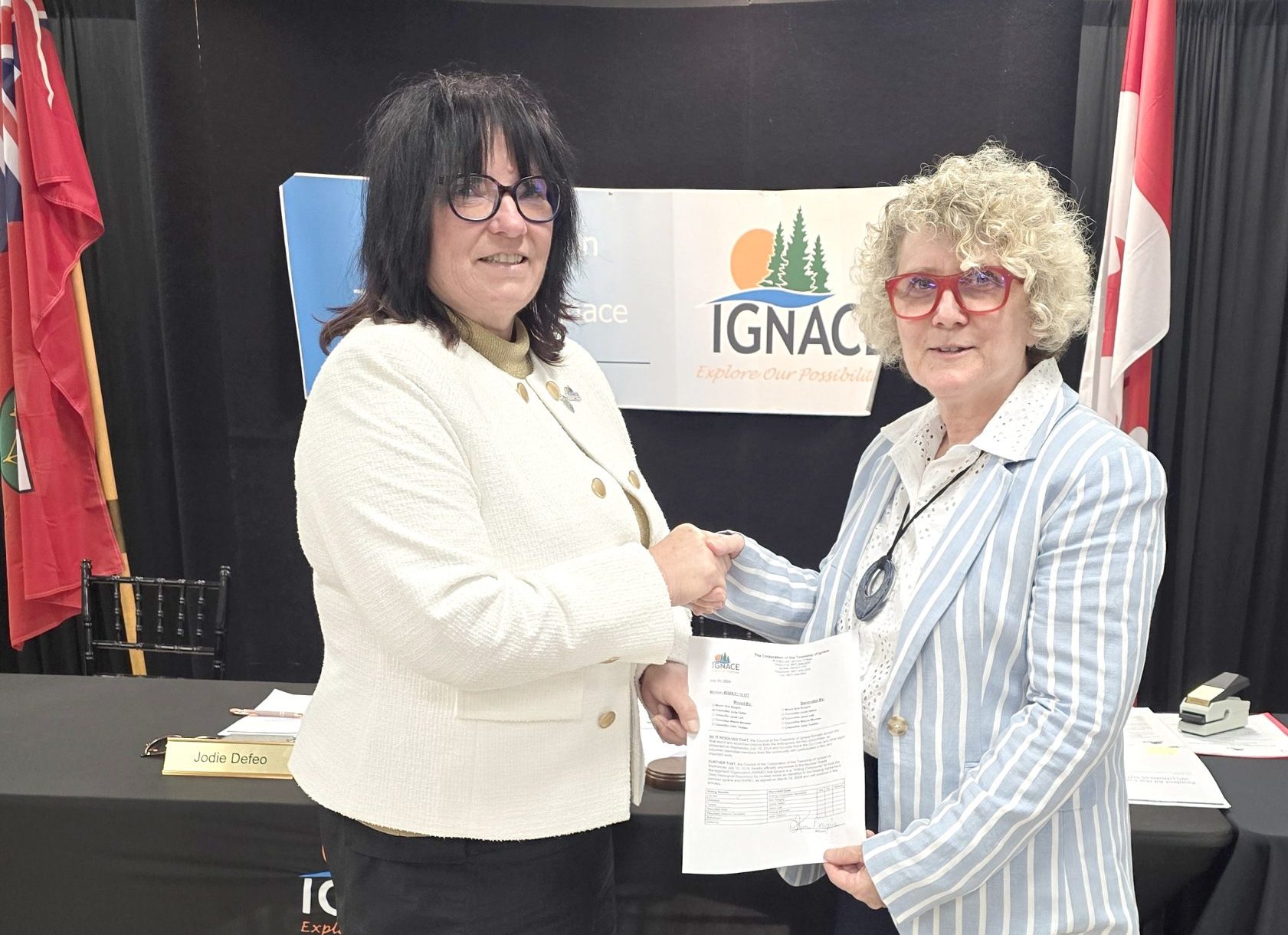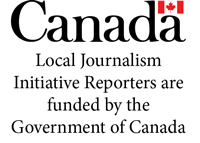SOUTH BRUCE – On Nov. 28, the Nuclear Waste Management Organization (NWMO) officially announced it has selected Wabigoon Lake Ojibway Nation (WLON) and the Township of Ignace as the hosts for the future site for Canada’s Deep Geological Repository (DGR) for used nuclear fuel, a press release states. This decision comes after a razor-thin vote in South Bruce on Oct. 28 marked the municipality’s willingness to be considered as hosts for the DGR. Saugeen Ojibway Nation (SON) was still in the process of considering future voting to declare willingness or not for the project to be hosted on their territory.
Wabigoon Lake Ojibway Nation had announced their willingness to take the next step in the site selection process on Nov. 18. Ignace had declared willingness in July.
“The Municipality of South Bruce has been notified that the Nuclear Waste Management Organization (NWMO) has selected the Township of Ignace and Wabigoon Lake Ojibway Nation to host the NWMO’s Deep Geological Repository (DGR). South Bruce congratulates the NWMO for the completion of its process and the two northern communities on being the selected site.
The Municipality will receive a $4 million payment from the NWMO for its participation in the site selection process. This payment is in addition to the $4 million the Municipality is set to receive from the NWMO in early 2025 for declaring the community a willing host following a referendum held on October 28, 2024.”
“Through its 12-year participation in the site selection process the Municipality has positioned itself to pursue alternative economic development opportunities,” said Mayor Mark Goetz. “South Bruce looks forward to exploring these opportunities to create success for future generations.”
Former Chair of Protect our Waterways (POW) Bill Noll spoke with Midwestern Newspapers after the NWMO’s press release published. Noll expressed mixed feelings, being pleased for South Bruce but not for Ignace, as both communities had collaborated closely.
“We’ve been partners all along both communities the opposition team have worked closely together. So it’s on to a different chapter.”
He emphasized the importance of South Bruce municipality’s future economic development and population growth, hoping they would invest as much effort into planning for the future as they did into this project.
“I would really like to know what South Bruce Municipality is going to do now. This hasn’t changed the situation, as far as the community is concerned, from a point of view of where is the economic development of the population growth going to come from?”
Chris Peabody, warden of Bruce County, told Midwestern Newspapers over the phone that NWMO’s announcement did not come as a surprise to him, after the announcement by SON earlier in the week.
Peabody noted NWMO wanted an answer by the end of the year, and it was apparent SON had their own schedule. “When you have two very strong, independent band councils with different (two-year) election schedules … and NWMO was not willing to wait,” Peabody said, noting that in Ignace, NWMO was negotiating with one band.
“I look forward to seeing SON’s response,” the warden said.
He went on to say that from a Bruce County point of view, the news about Ignace is “disappointing,” regarding economic development.
“Bruce County was willing to wait for SON and respected that process,” Peabody said. That meant the county had not been negotiating with NWMO. “Nothing gained, nothing lost,” he said.
However, looking at the whole picture, it’s a good news story – it’s “positive that NWMO now has a safe site” for storage of spent nuclear fuel. It’s good news for Bruce Power and AtkinsRéalis.
The scope of the county’s involvement with NWMO will be substantially reduced from what it would have been had South Bruce hosted the DGR. Peabody said there’ll still need to be an agreement for the safe transport of material out of the county to the site in Ignace.
The county’s focus will now be on engagement with Bruce Power, and its Major Component Replacement (MCR) project, as well as Bruce “C”.
Peabody said, “Engagement with Bruce Power has been very positive, and I anticipate more positive engagement in the future.”
Peabody commented that AtkinsRéalis, the company behind CANDU nuclear reactors, has just acquired land in the Port Elgin business park. The CANDU reactor is unique in its ability to produce medical isotopes.
“This will benefit the whole county,” Peabody said. “This is what the county will focus on.”
Saugeen Ojibway Nation (SON) released a statement, stating that “The decision is an historic victory for SON, its People, and our rights of self-determination. Our People and leaders have fought for decades for the right of free, prior, and informed consent to be recognized and upheld with respect to the disposal of radioactive waste. It is as a result of these efforts that consent was required as part of NWMO’s site selection process. Our voices have been heard and respected – there will be no DGR in SON Territory without our consent.
“Our work, however; is not done. The reality is that SON’s nuclear waste problems, including the current and growing storage of 45% of Canada’s used nuclear fuel waste, remain unresolved. NWMO’s current plan is to keep the used fuel waste in SON Territory for generations to come while it attempts to build a site in the North. NWMO and the rest of the nuclear industry have failed to recognize that this continued exploitation of SON Territory is unacceptable and will not stand.
“SON leadership has been working with NWMO for years to make sure that our right to decide is respected and that fair agreements would be in place to protect our interests regardless of what our members ultimately decided. We have always engaged with NWMO in good faith. Unfortunately, the manner in which NWMO has made its own decisions is extremely disappointing. NWMO made many commitments to work with us collaboratively to support our decision-making process in a full and respectful way. But it is clear NWMO continues to act unilaterally – making decisions behind closed doors and without regard for our governance process or good-faith partnership.”
The release ends with noting that “SON leadership, guided by membership, will continue to move ahead with industry and government in a principled way, based on our inherent right to make decisions that are best for our Territory, future generations, and way of life. We will continue with all of our members through our membership engagement sessions so that we can build our own vision for how to resolve the many challenges caused by the nuclear industry and what future projects and plans we might support and which we cannot. We now have the breathing room to make decisions that are best for our Territory and our future.”
The NWMO press release reads as follows:
TORONTO, Nov. 28, 2024 – Today, the Nuclear Waste Management Organization (NWMO) announced it has selected Wabigoon Lake Ojibway Nation (WLON) and the Township of Ignace as the host communities for the future site for Canada’s deep geological repository for used nuclear fuel.
Canadians and Indigenous peoples have been clear that it is essential to take responsibility now, in this generation, to safely manage Canada’s used nuclear fuel for the long term. This announcement is an important milestone in delivering on that promise to not leave it as a burden for future generations to manage.
“This is a historic moment,” said Laurie Swami, NWMO President and CEO. “This project will solve an environmental issue and supports Canada’s climate change goals. And today’s decision was driven by a consent-based siting process led by Canadians and Indigenous peoples. This is what making history looks like.”
There is international scientific consensus that a deep geological repository is the safest way to manage used nuclear fuel over the long term, and Canada is among the leading countries on this solution.
The NWMO launched its community-driven, consent-based site selection process in 2010. It included clear commitments that Canada’s plan for used nuclear fuel could only move forward in an area with a site that meets rigorous safety standards and that has informed and willing hosts. The project also needs to be implemented in a way that advances community well-being as defined by the host communities.
The people of both host communities have demonstrated their willingness to move forward in this process. Earlier this month, WLON confirmed its willingness, following a decision-making process that was open to all its members. The Township of Ignace completed a decision-making process with its residents in July, which also confirmed willingness.
This important decision for Canada was possible because of the communities’ leadership and active engagement over a decade of learning, as well as considering the future of their communities. The safety of the site was also established through rigorous site assessment and technical studies.
“We have learned so much from all the communities that took part in this process over the years,” said Lise Morton, NWMO Vice-President of Site Selection. “By challenging us, they helped the NWMO grow and become a better organization, and they directly shaped this project.”
The project will drive a wide range of benefits for both host communities, the region and Canada as a whole over the 175-year timeline of the project. These include new jobs and investments in community well-being driven by the priorities communities themselves defined.
As the project now advances into the regulatory decision-making process, Canada will take another step forward on this long-term management solution for its used nuclear fuel, which will protect people and the environment, including water, while supporting its goals around energy security and climate change.
“We acknowledge the NWMO site selection decision, and we look forward to continuing to work closely as this project enters the regulatory assessment phase. WLON views our role as the potential host for Canada’s used nuclear fuel as one of the most important responsibilities of our time. We cannot ignore this challenge and allow it to become a burden for future generations. Our membership spoke with a clear voice in our willingness decision that we have the bravery and courage to continue to the next phase of this project.”
“The WLON Regulatory Assessment and Approval Process (WLON-RAAP) asserts our Sovereign rights while protecting our Anishinaabe Values and Laws. This project will be under intense scrutiny by our Nation’s regulatory process in addition to the regulatory oversight by the Impact Assessment Agency of Canada and the CNSC. Wabigoon will ensure that safety, environmental protection and Anishnaabe values are upheld throughout this process.” – Chief Clayton Wetelainen, Wabigoon Lake Ojibway Nation
“The Township of Ignace is honoured, humbled and delighted to have been chosen as the site of a deep geological repository to store Canada’s used nuclear fuel by the Nuclear Waste Management Organization. Today’s announcement marks the beginning of the future of this community, for its residents, our youth and for generations to come. We will now begin to focus on being committed, dedicated and fully engaged in the process to establish Canada’s first ever deep geological repository with a goal to build up our community, our region and the future prosperity of all of northwestern Ontario. We thank the NWMO, our neighbours at Wabigoon Lake Ojibway Nation and most importantly the staff, volunteers and people of Ignace, for their confidence and for having so dedicatedly committed their time for over a decade towards our collective success in being selected today.” – Mayor Kim Baigrie, Township of Ignace
“I express my deep gratitude to the communities of Wabigoon Lake Ojibway Nation and the Township of Ignace, as well as the many other communities that were involved in the site selection process, for their thoughtful leadership and active engagement. I also commend the NWMO for its long, hard work and for the progress it has made in advancing a safe, responsible and informed plan. Thanks to our commitment to health and safety, Canadian nuclear energy will continue to power communities at home and allies around the world – providing Canadians jobs and opportunities for generations.” – The Honourable Jonathan Wilkinson, Minister of Energy and Natural Resources
“I extend my thanks to the leaders of Wabigoon Lake Ojibway Nation and the Township of Ignace for their leadership and willingness to host this vital project. As our government expands our zero-emissions nuclear fleet to meet rising energy demand, Ontario is cementing its position as a world leader in all parts of the nuclear lifecycle – this achievement by NWMO is just the latest example.” – The Honourable Stephen Lecce, Ontario’s Minister of Energy and Electrification
About the NWMO
Founded in 2002, the Nuclear Waste Management Organization (NWMO) is a not-for-profit organization tasked with the safe, long-term management of Canada’s intermediate- and high-level radioactive waste, in a manner that protects people and the environment for generations to come.
The NWMO has been guided for more than 20 years by a dedicated team of world-class scientists, engineers and Indigenous Knowledge Holders who are developing innovative and collaborative solutions for nuclear waste management.
This is a developing story.



